Petunia cascading: description, types and cultivation
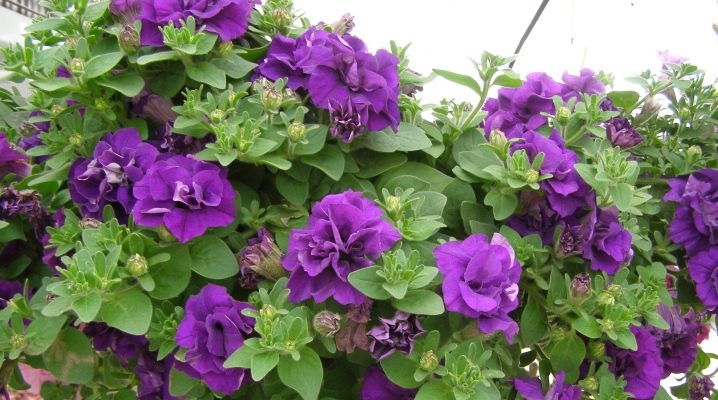
Petunia is one of the most common flowers. It has a rich and bright color that attracts a lot of attention. The color and shape of the inflorescences can vary significantly. However, not only the attractive appearance of petunia conquers the hearts of flower growers, but also its unpretentiousness. Today we will take a closer look at the charming cascading plant and see what species it is subdivided into.
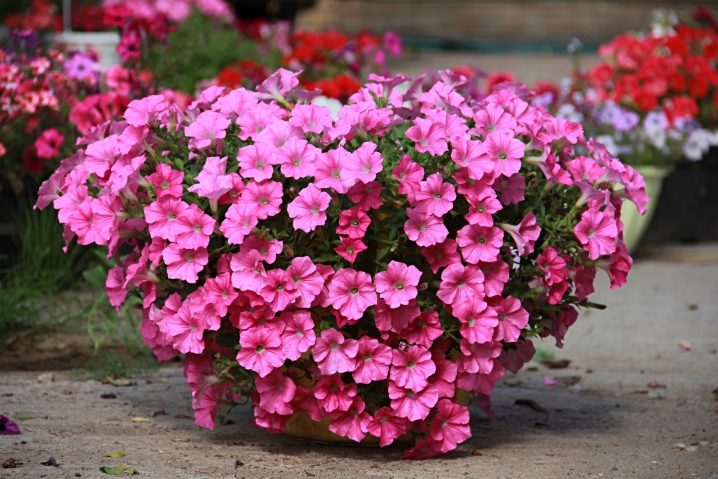
Peculiarities
Cascading petunia is very common. It is one of the varieties of ampelous flower and has a number of its own characteristics. Let's get acquainted with their list.
- Cascading petunias are distinguished by rather elastic and dense shoots. They can be up to 1.5 m in length. They are so strong that they do not break, even if they are affected by gusts of wind. Greenery grows here thanks to axillary shoots. Initially, they rise upward, and upon reaching a certain length parameter, they begin to fall downward.
- Outwardly, this beautiful plant resembles a ball in many ways. with long falling lashes, if placed in a hanging pot.
- The buds of this spectacular plant usually grow quite large - up to 5 cm. On one plant, all flowers have the same dimensions.
- Cascading petunia can hardly be called a very capricious plant., but she needs proper watering and timely feeding. These questions are especially acute when it comes to the period of flowering and the formation of new buds.
- Too much water can seriously harm the cascading petunia. Even if it is collected in a pallet, this can soon lead to the fact that the roots of the flower begin to rot.
- This charming plant is kept not only on balconies and loggias, but also in public places. Very often, cascading petunias can be found in parks and squares. Many owners use petunias to decorate their gardens and gazebos.
- Do not think that cascading petunias - this is the only species of this plant.
In fact, it is subdivided into several popular varieties that are very common.
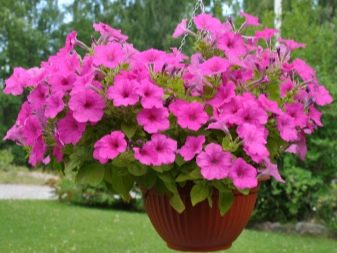
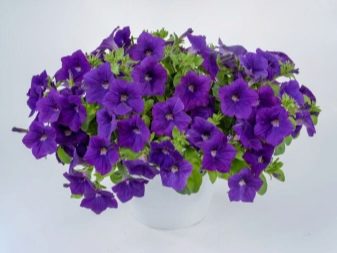
What is the difference from ampelous?
Cascading and ampelous petunias are different flowers, although the former are subspecies of the latter. Many growers ask a reasonable question, what are the main differences between these plants. Let's figure it out.
- Ampel petunia is characterized by the fact that it has fairly dense and stable shoots. In length, they often reach a mark of 2 m.Of course, it makes sense to count on such a result if you provide the plant with proper competent care.
- The stems of ampelous flowers are dense and strong. As they grow, they can "wrap" the supporting parts or actively grow along the ground, forming a beautiful ball. Just one petunia will be able to transform the flower garden you have formed into a spectacular flower "pillow". Its area may well reach 2 square meters. m. Of course, you need to properly care for the plant and water it on time if you want to achieve such results.
- The ampelous species is capable of creating a large number of large-sized flowers. That is why balconies and loggias, as well as decorative pavilions on personal plots, are so often decorated with such details.
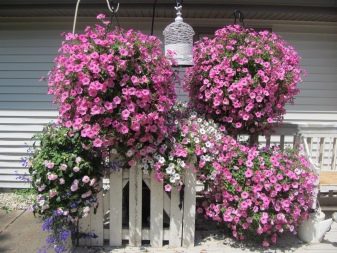
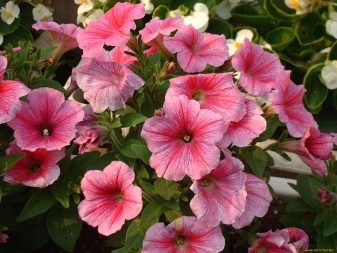
As for the cascading petunia, here it should be noted that it is distinguished by beautiful flowing stems. Their length can only reach 1 m. This variety is decorated with bright and rich flowers of various sizes. They fall down in an original way, making the flower arrangement even more attractive. During vigorous flowering, cascading petunia looks very similar to spectacular flowering curtains.
Such plants are very fond of moisture and warmth, so caring for them is rather painstaking.
However, the cascading petunia is well worth it - if done correctly, it will definitely delight you with its stunning colorful bloom.
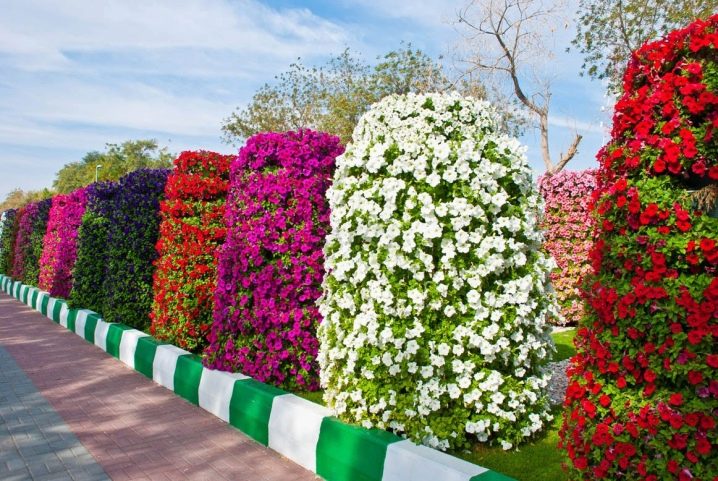
Varieties
Cascading petunia is insanely popular today because it has a truly amazing and spectacular appearance. Moreover, this flower is famous for the variety of different varieties. Let us consider in more detail what varieties of cascading petunias exist in nature, and how they differ from each other.
The greatest favor of florists was obtained by charming flowers of such varieties:
- Double Cascade;
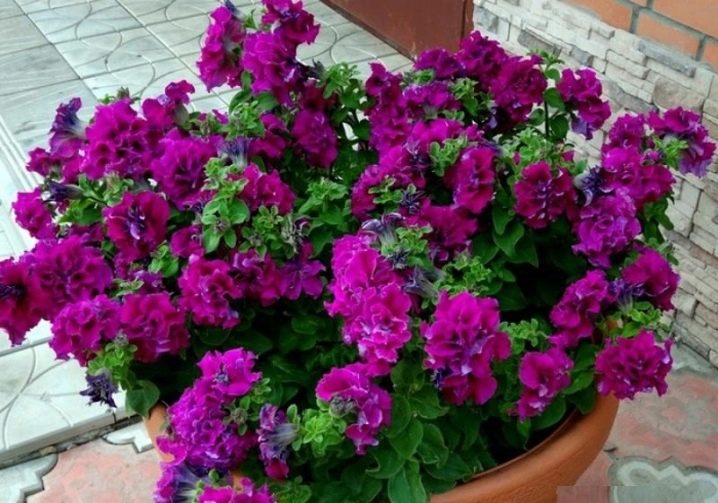
- La Gioconda;
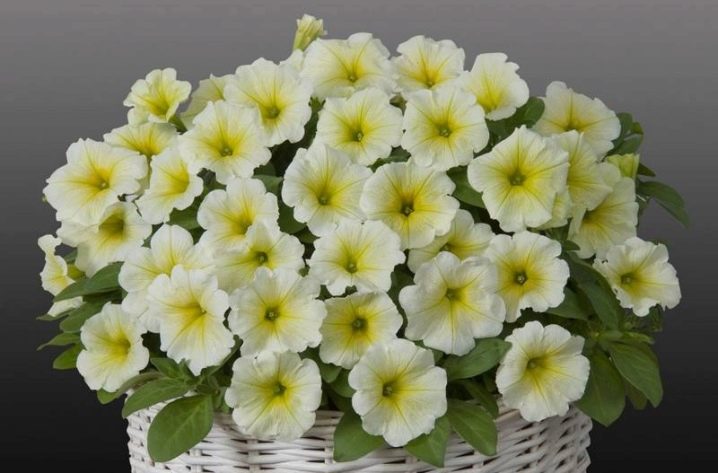
- Ramblin F1.
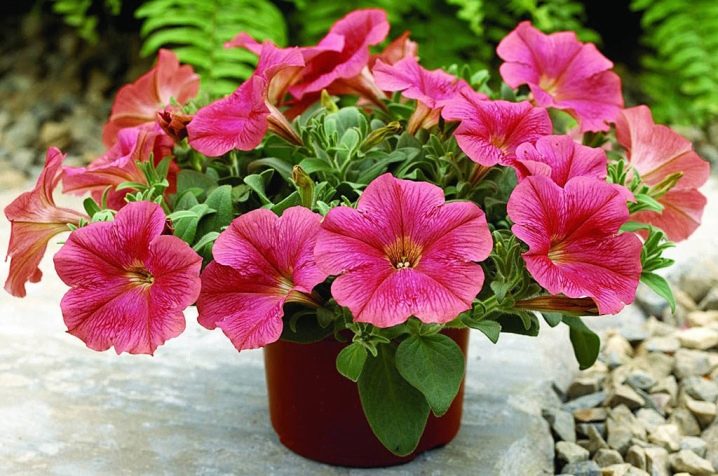
Petunia varieties "Double Cascade " differs in giant double flowers of a rich color. They exude a delicate and pleasant aroma. The bush itself grows very neat, with beautiful emerald green leaves. "Double Cascade" is one of the brightest representatives of annual flowers.

Another insanely popular and spectacular variety of cascading petunia is "La Gioconda"... This is a multi-flowered, creeping beauty that attracts a lot of attention. Such petunia grows in a luxurious bush of not too large size. Its shoots are highly branching, densely covered with flowers, the diameter of which is usually about 5-6 cm. Especially spectacular and expensive, the flowers of "La Gioconda" look in elegant hanging pots. But it is important to remember that their capacity should be at least 10 liters.
A significant advantage of the Gioconda petunia is that it adapts very easily in a variety of temperature conditions.
Thanks to this feature, these plants can be grown in different climatic zones, as well as preserve them during the harsh winter season.
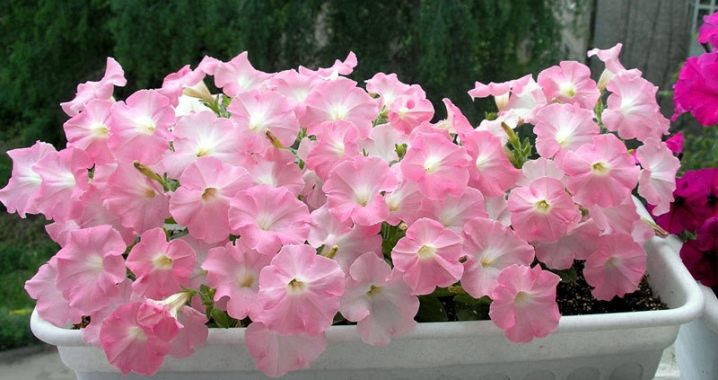
A hybrid of a cascading petunia - "Ramblin Burgundy chrome". It belongs to surfinii and is considered the most desirable “inhabitant” of the garden, because it rarely exceeds 40 cm in height, but its creeping shoots can be about a meter long. Due to these distinctive features, flower growers have the opportunity to make very interesting and unusual flower combinations from the Ramblin variety in hanging pots. Also, the features of this beauty are:
- early flowering;
- an abundance of flowers;
- undemanding care;
- long flowering period.
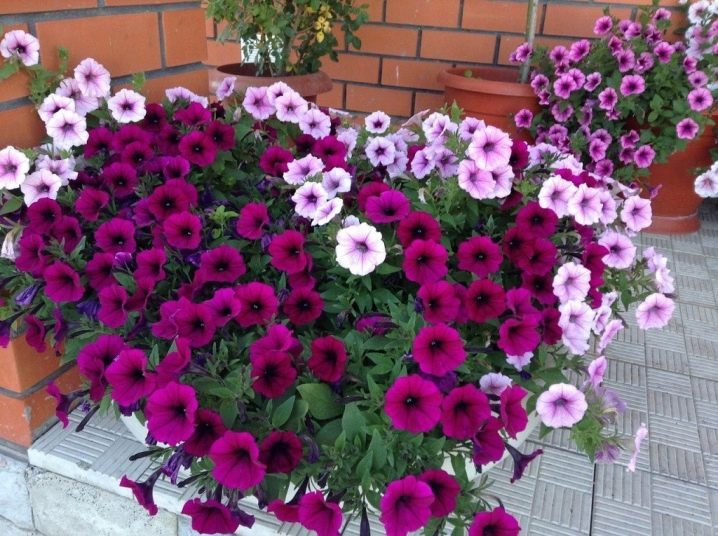
The cascading petunia of another popular variety grows very beautiful and tender - "Waterfall pink soft F1"... It is a hybrid terry annual with large flowers. "Waterfall" is one of the earliest in flowering and has remarkable growth properties. Such flowers are distinguished by high decorativeness - these "green pets" can effectively decorate a room or garden plot.
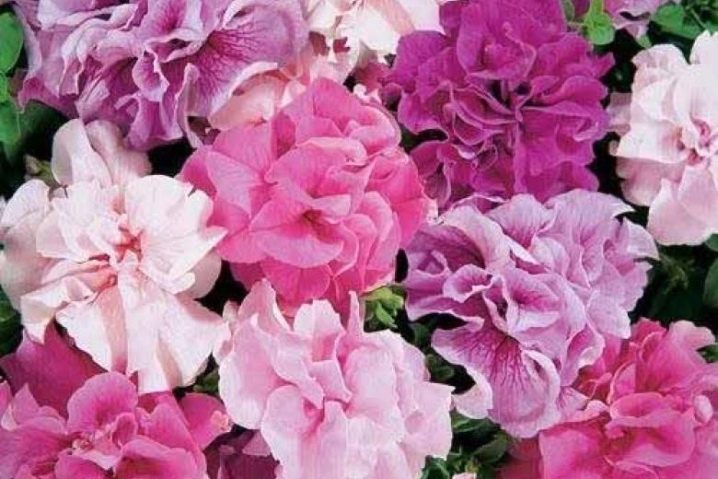
Terry beauty is characterized by abundant flowering. "Blue Falls F1"... Such petunias not only grow very spectacular and bright, but also quite stable and unpretentious. A characteristic feature of this variety is the growth of large flowers, resembling a carnation in shape.
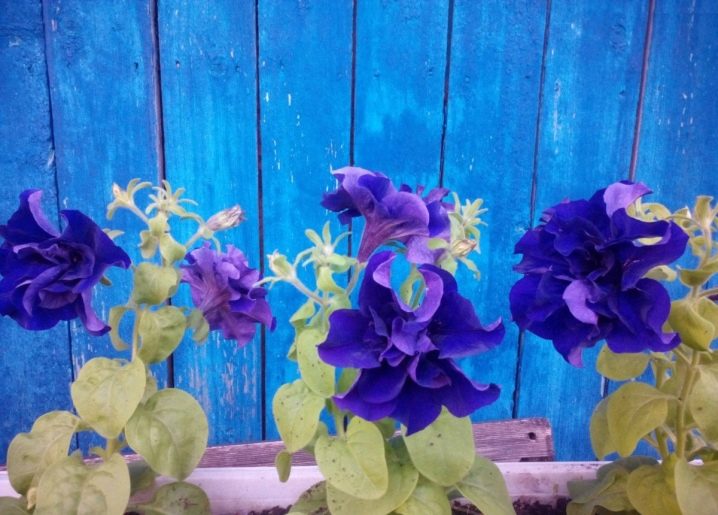
Large and bright flowers of the petunia variety grow very beautiful "Cascading Snow White F1". They grow terry. The flowering period of this variety is long.
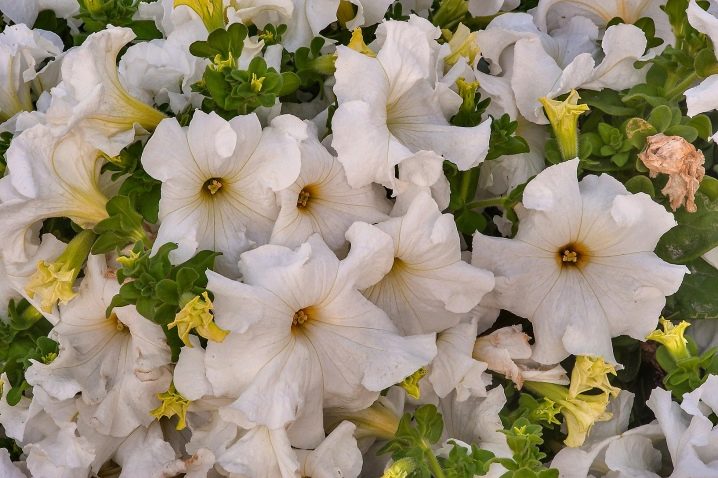
There are many more different varieties of cascading petunias with their own names. For example, many growers prefer to grow flowers:
- Orchid Mist;
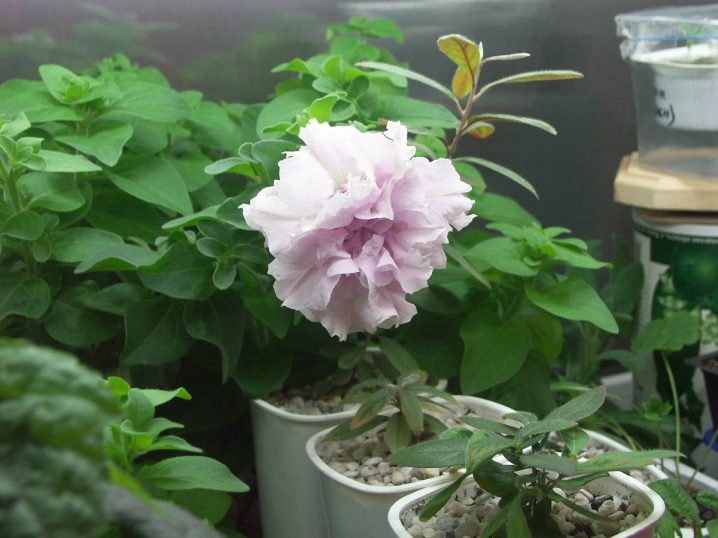
- "Mix";
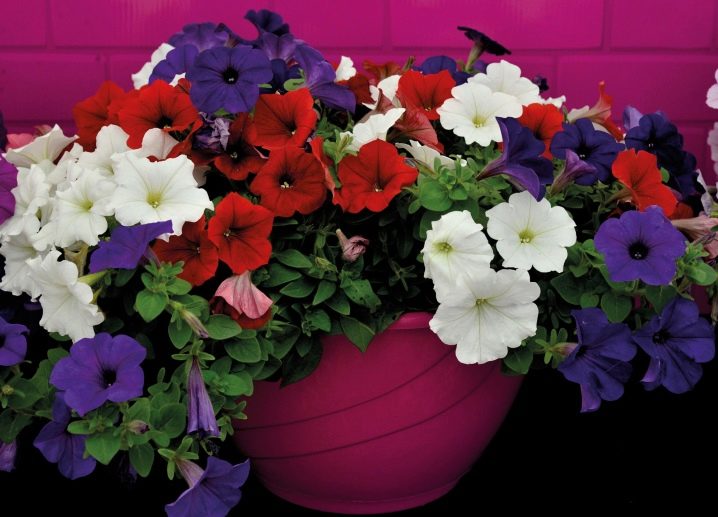
- Typhoon F1 red velor;
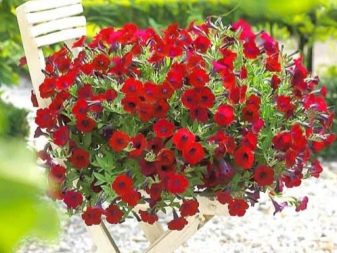
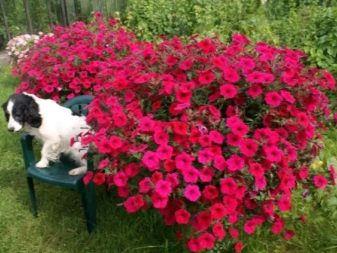
- "Double cascade F1 blue";
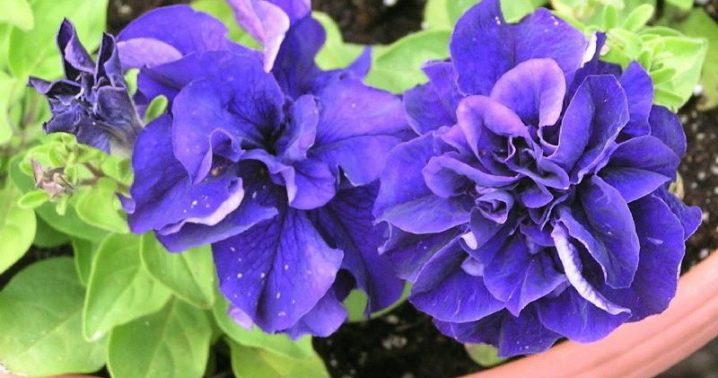
- Ninya F1 parple (or lavender);
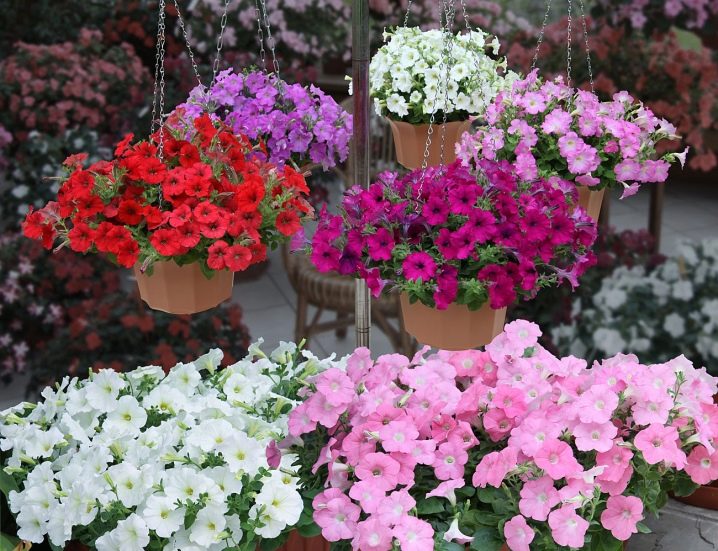
- "Tornado F1 Silver";

- Picobella.
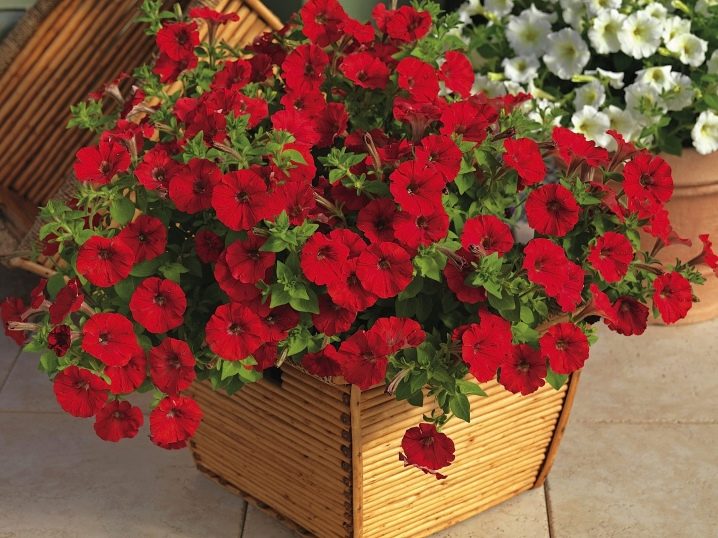
Flowers look luxurious and expensive on garden plots Mammy F1 Yellow, Rome Chianti or Orchid Mist. Each of these options is characterized by its own properties and parameters, therefore it is so important when buying such plants to know exactly which variety they belong to. Only by knowing this, it will be possible to provide the flowers with proper care.
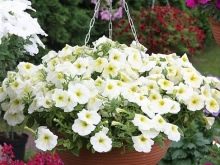
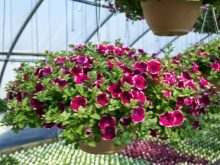
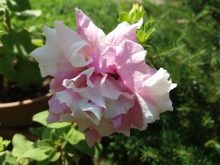
How to plant?
It doesn't matter which variety of cascading petunia you choose. Any variety must be properly seated. Today on sale you can find ready-made seedlings of this flower. In the conditions of competent care, she will demonstrate a gorgeous flowering to the florist. At the same time, it will be possible to abandon the painstaking work of caring for the seeds.
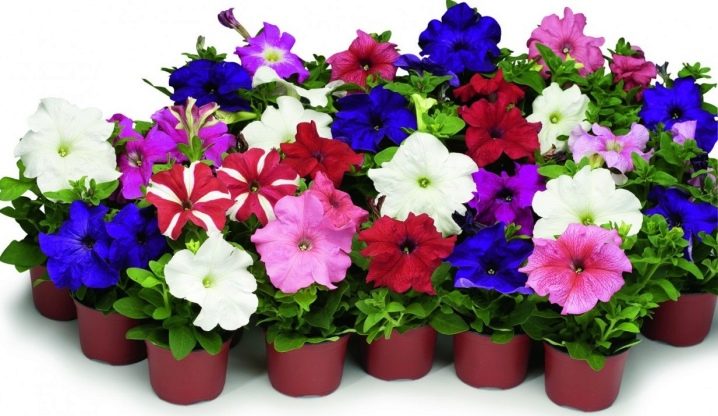
If you decide to grow seedlings yourself, then you need to buy suitable seeds. In addition, you will need to prepare a good, neutral soil. This can also be purchased at a garden store. Now let's look at how to sow a cascade petunia.
- It should be carried out in mid February or early March.
- The inoculum must be good drainage needs to be ensured, sprinkling expanded clay on the bottom.
- Bring in harvested soily, and then plant petunia seeds in it.
- Cover the container with glass (you can use a film) and place in a room where there is moderate humidity and temperatures from +20 to +25 degrees.
- Water your seeds every day using a spray bottle... Add a little potassium permanganate to the water - it will stimulate the growth of flowers.
- When the third leaf is formed, the seedlings can be transplanted into special peat pots. With them, in the future, you will transplant petunias into open ground.
- If you plan to plant flowers in a pot, then it must be borne in mind that in order to obtain a voluminous and multi-flowered composition, several plants will have to be planted in one container at once.
- So that petunia (any - large-flowered or small-flowered) fully bush, experts recommend carefully pinching the flowers at a height of 5-6 leaves. After that, you can expect lush blooms and bright flowers from the cascading petunias.
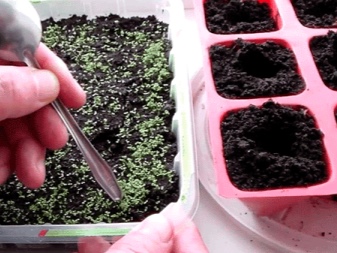
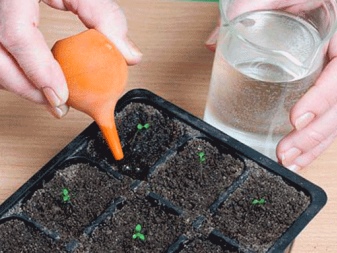
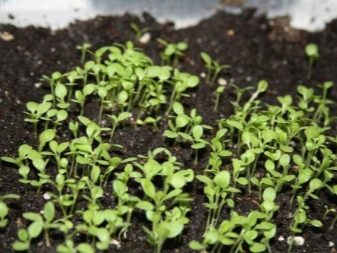
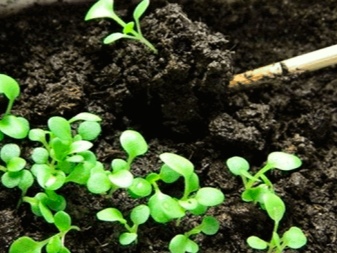
As you can see, planting a cascading petunia with your own hands is very simple. After that, the flower will definitely need to provide proper proper care. Without it, even with a perfect planting, the plant will not grow as it should.
Subtleties of care
If you are planning to grow a beautiful and healthy plant at home, then you will definitely need to take proper care of it. So, if you are going to grow this beautiful plant in a charming flowerpot or flowerpot, then it is advisable to plant several plantings in one container at once, so that you end up with a brighter and more saturated flower arrangement.
Petunia will feel best in a sunny and well-lit place. As for watering - it should be daily. If the weather is sultry and hot outside, then it is better to water the cascading flowers a couple of times a day so that they do not dry out and are saturated with water.
Do not forget that cascading petunia is very fond of spraying leaf blades.
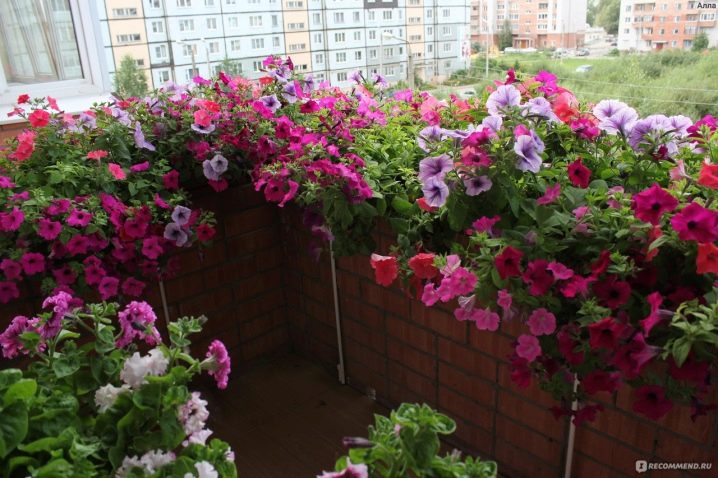
It is very important to keep under control the presence of nutrients in the soil where the flower grows. Dried inflorescences and foliage must be removed. This is due not only to the fact that these elements spoil the aesthetics of the petunia, but also to the fact that they negatively affect its proper growth. In addition, dried components are removed so that the plant does not undergo various diseases. For active and full-fledged growth and flowering, it is necessary to timely feed the cascade petunia with special complex fertilizers, which contain components such as magnesium and potassium.

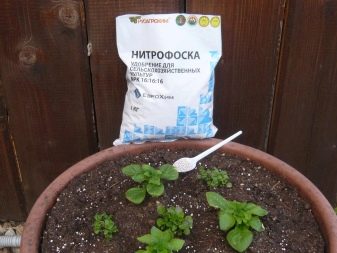
Reproduction
Beautiful petunia flowers, regardless of the direct species and variety, can be propagated by cuttings... To this end, in the fall, it is required to transfer the mother plant in a container and cut off old shoots. Store such vessels only in a well-lit and sufficiently ventilated space. Watering should be moderate. It is desirable that the temperature in the room does not exceed 12 degrees Celsius.
- In the spring, when the plant releases shoots, you will need trim the cuttings carefully, the length of which should reach about 10 cm.
- You will also need gently peel the stem from the leaf blades, without touching the 2 sheets from above.
- Move the cuttings to the vessel with a solution of special phytohormones.
- Further, the cuttings will need to be moved to wet sand and cover with glass on top.
- The place where the cuttings will grow should be light enough, and the temperature regime should be at least +23 degrees Celsius. Daylight hours should take at least 10 hours. If necessary, take care of additional lighting in the room.
- A week later the cuttings will grow roots.
- When the first leaves are visible, the flowers will need to be carefully transplanted into small pots.

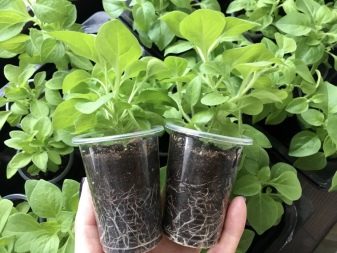
Diseases and pests
Beautiful cascading petunias, like any other houseplants, are susceptible to attacks by various parasites, and certain diseases are not alien to them. So, flowers growing on a balcony or in pots are much less susceptible to infection with serious diseases, which often occur in plantings planted in open ground.
One of the most serious enemies of the cascading flower is the spider mite. In order to start fighting it in time, you must always keep the plant under control and inspect it regularly. Aphids can be noticed just like that, but the tick will remain invisible to the last. To overcome this pest, it is necessary to spray the plant with an infusion made up of garlic husks or medicinal dandelion. To get rid of this ailment, you will need to treat the flower with drugs such as Aktara or Confidor.
When aphids infect a plant, elements like sticky dew inevitably appear on it.
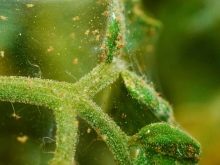
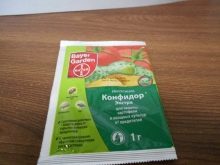

Another serious attack that cascading petunia often encounters is powdery mildew. You can cope with it using nitrogen dressings and garlic tinctures. The last is sprayed on the diseased plant.
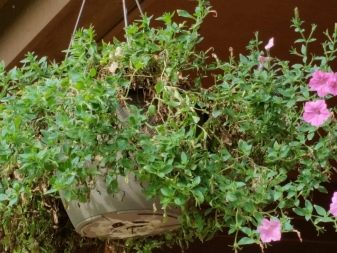
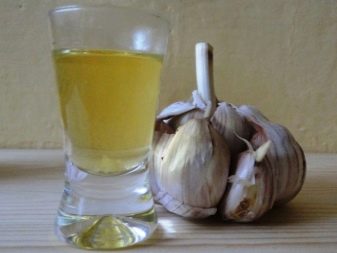
One of the most common cascading flower problems is fungus. Usually, it is he who becomes the main reason for the poor growth of petunias. In this case, lateral shoots may be absent. Due to a too high level of soil moisture, an ailment such as late blight... It is manifested by darkening on the stems of the plant. If the bushes are not treated in time with a special preparation, then the petunia may die.

Regardless of the specific variety of the selected plant, it is important to always keep his condition under control. As soon as you notice that petunia is "sick" or has become a victim of parasites, you need to act as soon as possible to get rid of the problems that have arisen. If you take time, the plant can be lost.
Tips for growing petunias - watch the video.







































































































The comment was sent successfully.